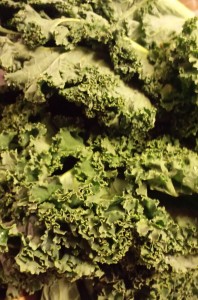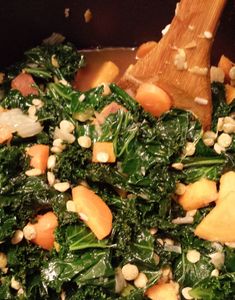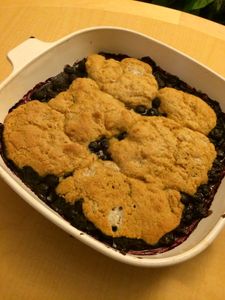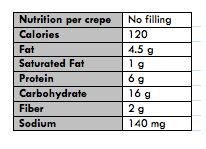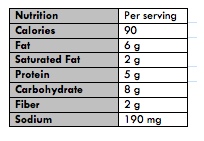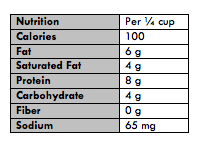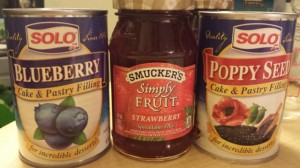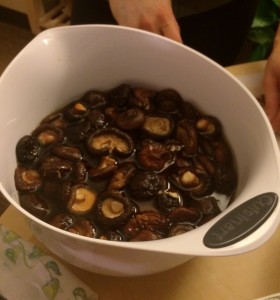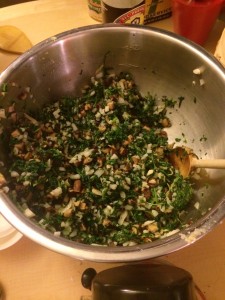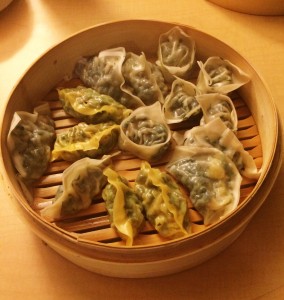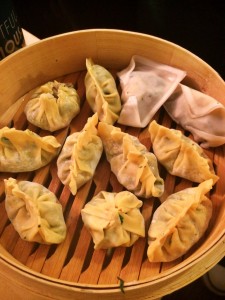By Rachel Priebe, Nutritional Sciences student, Sargent College
Every Wednesday Karen Jacobs EdD, OTR/L, CPE, FAOTA hosts the Sargent Choice Test Kitchen in Stuvi 2 Apt. 2302 from 8-11pm. She invites the BU community into her home to test new Sargent Choice recipes while we cook, drink tea, and play board games.
The three main ingredients in this recipe are a dietitian’s dream: lentils, a great source of plant protein, sweet potatoes, powerhouse food of vitamin A and C, and kale, the trendiest food of 2013. All three are “superfoods” in their own right, but when you combine them in this savory dish they become a super meal.
Although Karen referred to this as a soup (which it could easily be converted to with the addition of a bit more chicken broth), it actually has the consistency of a warm salad or stew. It would make a wonderful main dish for four, or a side dish for 6-8 people. We made a few modifications to the recipe, such as leaving out the Serrano pepper, and it was very well received. People were getting up for seconds and thirds!
One important thing to know about this recipe is that it is vital that all of the vegetables be diced about the same size. This ensures even cooking of each ingredient, which leads to a better final result. We also found that the lentils were a little undercooked after the recommended half hour, but we were hungry so we ate it anyway. To prevent this, you should soak the lentils in water or chicken broth for about an hour before cooking the recipe.
This recipe was a super tasty way to get many vitamins and minerals in one pot, and I highly recommend you try it as soon as you can!
Sargent Choice
Spicy Lentils with Sweet Potatoes and Kale
Recipe adapted from Eat Live Run Blog
Yield: 4 servings
Ingredients
2 teaspoons canola oil
¼ cup small diced onion
1 stalk celery, small diced
1 large carrot, peeled and diced small
1 whole sweet potato, peeled and chopped into small ½ -inch cubes
1 teaspoon minced garlic
1 bunch lacinato kale, leaves torn into bits
½ cup green lentils
1 bay leaf
2 sprigs fresh rosemary
1 serrano pepper, whole (do not dice)*
¼ teaspoon salt
2 cups vegetable stock
Directions
- Heat the oil in a medium-sized pot. Once hot, add the onion, celery, carrot and sweet potato and cook for about six minutes, until starting to soften. Add the garlic and kale and continue cooking until the kale starts to wilt.
- Add the lentils, bay leaf, rosemary sprigs, serrano pepper and stock. Bring to a boil, then reduce heat and simmer for about 30 minutes until lentils are tender and have absorbed most of the liquid. *NOTE: When doubling recipe, it is not necessary (or recommended) to double the number of serrano peppers.
- Season with salt. Remove the bay leaf, serrano pepper and rosemary springs before serving.
Serving suggestion: Serve with whole wheat crusty bread. ENJOY!
Nutrition Facts per serving
| Calories | 370 |
| Fat | 14 g |
| Saturated Fat | 3.5 g |
| Protein | 14 g |
| Carbohydrate | 48 g |
| Fiber | 8 g |
| Sodium | 380 mg |
Disclaimer: The Sargent Choice blog includes links to other websites only as information to consumers, not as medical advice. When you access an external website, keep in mind that Sargent Choice has no control over its content. Sargent Choice is not responsible for the content found at any of the sites, nor do any links imply endorsement or promotion of the company/organization, its content, services, therapeutic treatment options, or products. Accordingly, you visit any site at your own risk. Sargent Choice is also not responsible for the policies and practices of these sites, such as their Privacy Policy, use of “cookies”, etc. We encourage you to review the privacy policies of each site that you visit through a link on our website.

